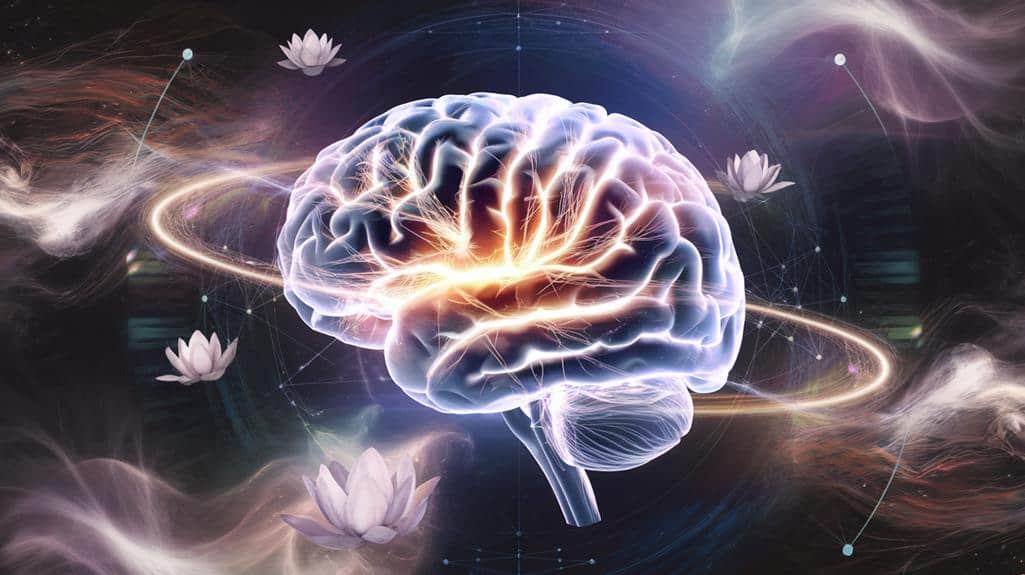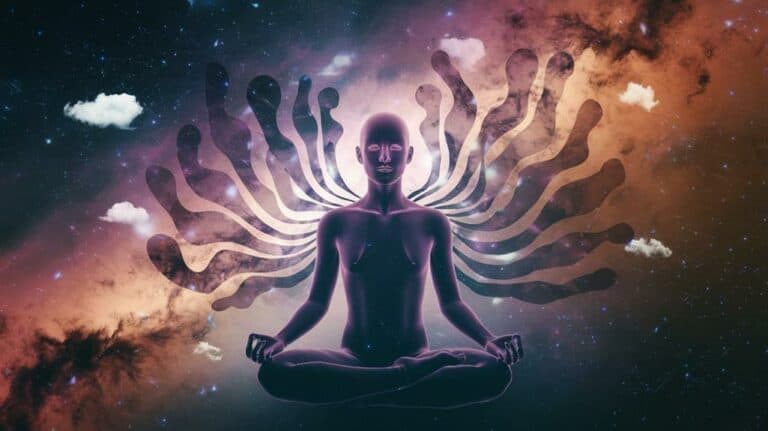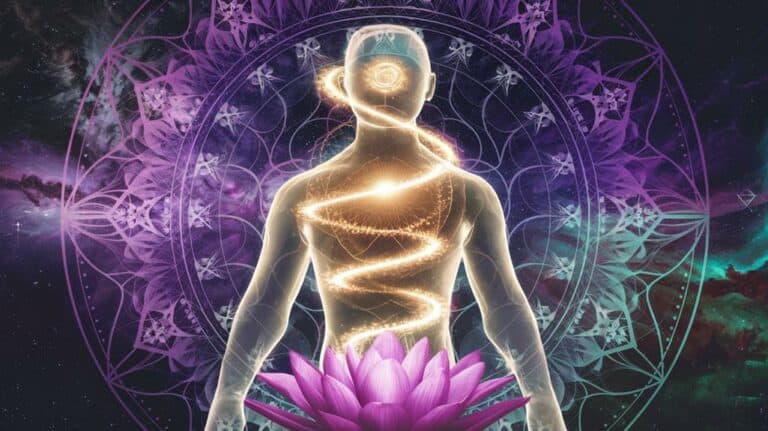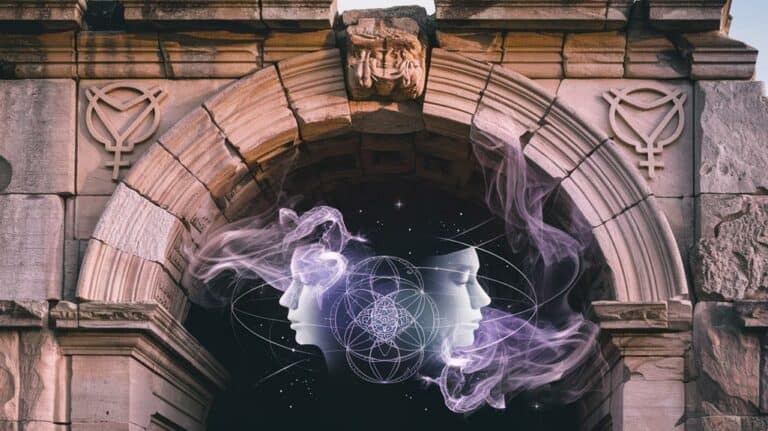The Neuroscience of Mystical States and Experiences
You’ve probably experienced moments of profound awe or transcendence that seem to defy explanation – perhaps while gazing at a starlit sky or during deep meditation. These mystical states aren’t just spiritual phenomena; they’re also fascinating subjects of neuroscientific investigation. As researchers map the brain’s activity during these extraordinary experiences, they’re uncovering how specific neural networks and biochemical changes contribute to feelings of unity, timelessness, and ego dissolution. Understanding the neuroscience behind these states won’t diminish their significance – instead, it’ll reveal how your brain can naturally access these remarkable dimensions of consciousness.
Defining Mystical Experiences
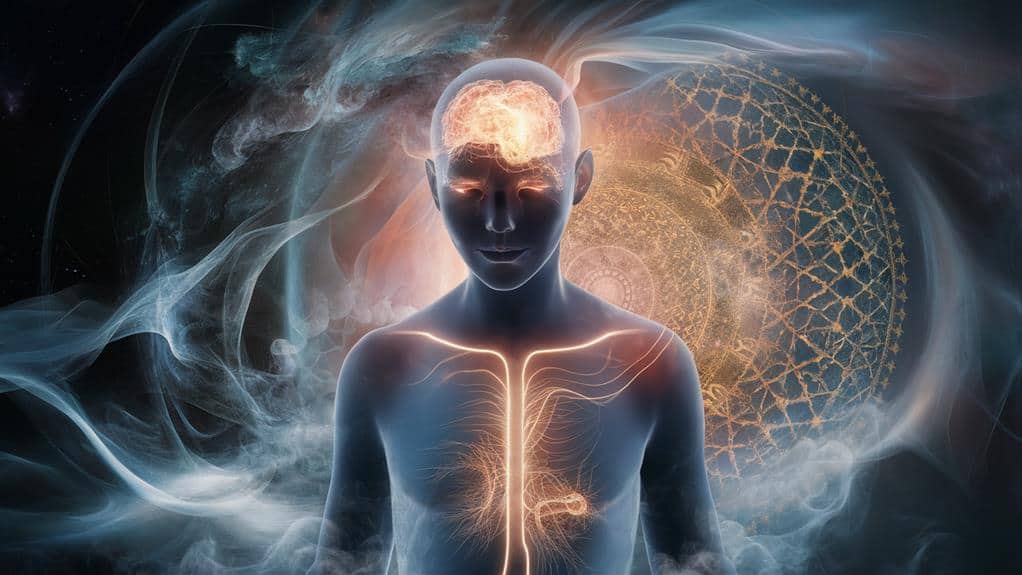
Throughout human history and across cultures, mystical experiences have been reported as profound altered states of consciousness that transcend ordinary perception and awareness.
You’ll find these extraordinary states often characterized by a dissolution of your normal sense of self, accompanied by feelings of unity with something greater – whether you call it the cosmos, divine presence, or ultimate reality. When you’re in such a state, your usual boundaries of time and space may seem to dissolve.
You can recognize a genuine mystical experience through several key attributes: ineffability (you’ll struggle to put it into words), noetic quality (you’ll gain direct insight or knowledge), transiency (it won’t last indefinitely), and passivity (you’ll feel it happening to you rather than creating it yourself).
You might experience what mystics describe as the “divine paradox” – where contradictory truths somehow coexist harmoniously. These experiences often leave you with a profound sense that you’ve encountered something real and significant, even if it defies conventional logic or description.
Whether triggered spontaneously, through meditation, or other means, these states represent some of consciousness’s most enigmatic and transformative manifestations.
Brain Regions During Mystical States
During mystical experiences, several key brain regions show distinct patterns of activity that neuroscientists can now measure and study.
You’ll find that your prefrontal cortex, particularly the temporal lobes, exhibits reduced activity, which may explain the dissolution of ego boundaries and sense of timelessness you might experience during these states.
Meanwhile, your parietal lobe, responsible for spatial awareness and self-orientation, shows decreased function, potentially contributing to feelings of unity and transcendence.
Your limbic system, especially the amygdala, demonstrates unique activation patterns that correlate with the profound emotional resonance you’ll encounter during mystical experiences.
The anterior cingulate, bridging emotion and cognition, becomes highly engaged, possibly facilitating the deep sense of meaning and significance that characterizes these states.
You might be intrigued to learn that your thalamus, often called the brain’s relay station, shows altered functioning that may account for the perception-altering aspects of mystical experiences.
These neural patterns suggest that what you’re experiencing isn’t merely subjective imagination but rather a distinct neurological state that transforms your conscious awareness in measurable, consistent ways.
The Default Mode Network
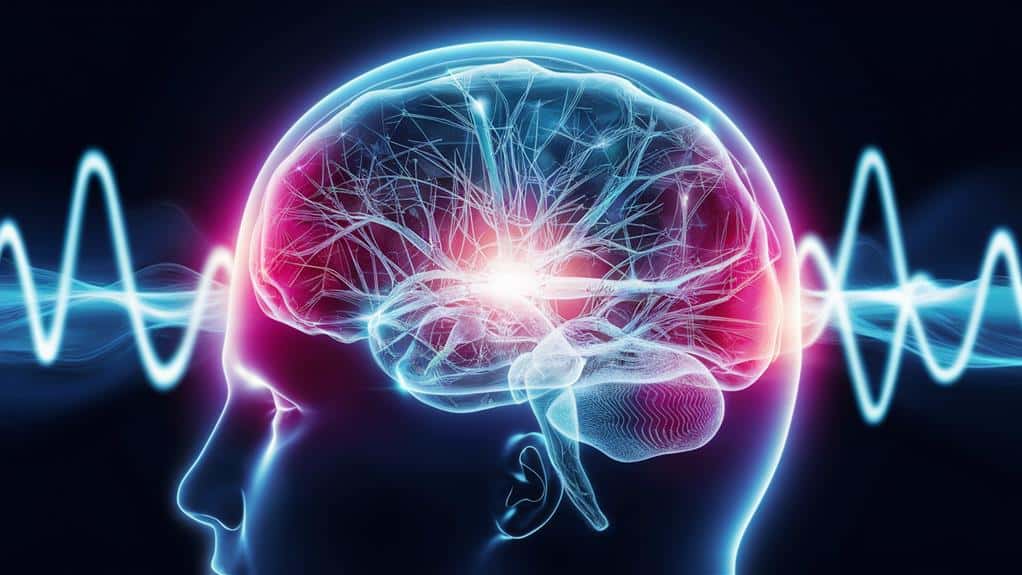
In regard to mystical experiences, the Default Mode Network (DMN) plays an essential role in shaping your conscious awareness. This interconnected web of brain regions, which includes the medial prefrontal cortex and posterior cingulate cortex, maintains your sense of self and personal narrative during ordinary states of consciousness.
You’ll find that when you’re lost in thought, planning for the future, or reflecting on the past, it’s your DMN that’s actively orchestrating these self-referential processes.
During profound mystical states, you’ll experience something remarkable – your DMN becomes considerably less active. This quieting of the default mode network corresponds with what mystics have long described as “ego dissolution” or “unity consciousness.”
When your DMN’s activity diminishes, you’re able to transcend your usual self-boundaries, experiencing a dissolution of the subject-object divide that typically defines your everyday perception.
You might find yourself feeling deeply connected to everything around you, no longer bound by your usual sense of separateness. This neurobiological shift helps explain why mystical experiences often involve feelings of oneness with the universe and transcendence of ordinary spatial and temporal boundaries.
Chemical Changes and Altered Consciousness
Neurotransmitters orchestrate the profound shifts in consciousness that characterize mystical states. When you enter these heightened states of awareness, your brain’s chemical landscape transforms dramatically – serotonin, dopamine, and endogenous opioids flood specific neural pathways, dissolving the boundaries of your ordinary perception.
You’ll find that these neurochemical cascades can mirror the effects of certain psychedelic compounds, suggesting shared mechanisms between naturally occurring and chemically induced mystical experiences.
Your brain’s chemistry during these states reflects a delicate interplay between excitation and inhibition, as GABA levels fluctuate alongside glutamate, creating the perfect neurological conditions for transcendent experiences.
You’re likely to notice how these chemical shifts correspond with distinctive phenomenological features – the dissolution of self-boundaries, the sense of unity with the cosmos, and the ineffable quality of mystical knowing.
The release of oxytocin during these experiences may explain the profound feelings of love and connection that often accompany them.
Understanding these chemical underpinnings doesn’t diminish the significance of mystical states; rather, it illuminates the intricate biological machinery through which consciousness can expand beyond its ordinary limits.
Brain Waves in Transcendent Moments
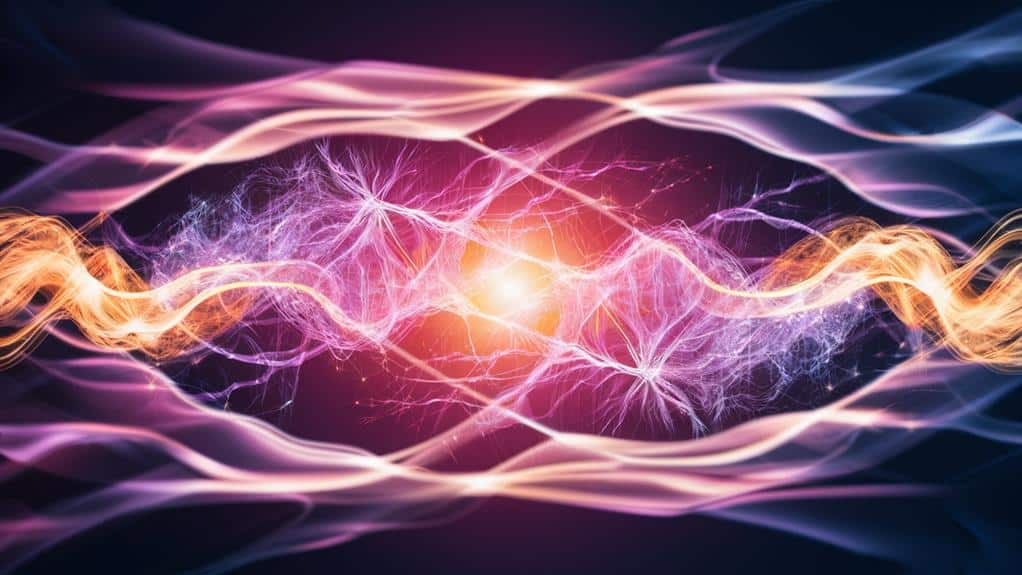
Brain wave patterns consistently shift during mystical experiences, revealing distinct oscillatory signatures that set transcendent states apart from ordinary consciousness. You’ll find these shifts particularly evident in theta and gamma frequencies, where your brain enters profound synchronization states that mirror deep meditative practices and peak spiritual moments.
During transcendent experiences, you’ll notice your brain moving from beta’s everyday chatter into slower, more coherent rhythms. Your neural oscillations begin to align in ways that reflect heightened unity consciousness, as alpha waves create a bridge between your ordinary awareness and deeper transpersonal domains.
You’re experiencing what researchers have documented in long-term meditators – a harmonious interplay of delta’s profound stillness and gamma’s integrative power.
These distinctive wave patterns aren’t just abstract measurements; they’re the neural correlates of your most transformative moments. When you’re immersed in mystical states, your brain produces coherence patterns that surpass normal boundaries of self, allowing you to access expanded states of consciousness where conventional limits of perception dissolve into direct, immediate knowing of reality’s deeper dimensions.
Neuroplasticity and Spiritual Practice
Through consistent spiritual practice, your neural pathways undergo remarkable reorganization, demonstrating the brain’s incredible capacity for adaptation and growth. When you engage in meditation, prayer, or contemplative practices, you’re not just calming your mind – you’re actively reshaping your neural architecture in ways that enhance emotional regulation, attention, and sensory awareness.
Your brain’s plasticity responds to these focused states, strengthening connections that support transcendent experiences while pruning pathways associated with stress and reactivity.
You’ll find that sustained practice creates lasting changes in regions linked to self-awareness, such as the posterior cingulate cortex and insula. As you dedicate time to spiritual disciplines, you’re fundamentally sculpting your brain’s structure, developing thicker gray matter in areas associated with compassion and metacognition.
The transformative power of these practices isn’t just theoretical – it’s measurable through advanced neuroimaging techniques that reveal increased connectivity between key brain networks. Your commitment to spiritual practice initiates a profound neurological journey, where each session contributes to an expanding capacity for deeper states of consciousness and heightened awareness of life’s sacred dimensions.
Modern Research Methods and Findings
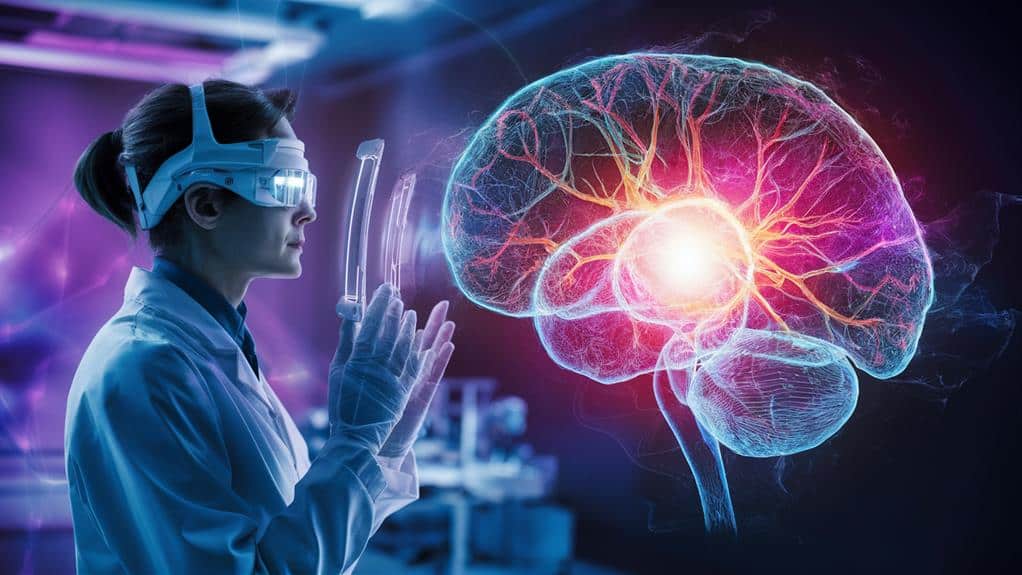
Recent technological breakthroughs have revolutionized our ability to study mystical states with unprecedented precision. You’ll find that modern neuroimaging techniques, like fMRI and SPECT scans, now allow you to witness the neural correlates of transcendent experiences as they unfold in real-time.
These tools reveal how your brain’s default mode network often deactivates during deep meditation, while other regions associated with self-transcendence become highly active.
Research findings consistently show that you’ll experience decreased activity in your posterior superior parietal lobe during mystical states, a region that helps you distinguish between self and non-self.
You’ll discover that your brain releases various neurotransmitters during spiritual experiences, including serotonin and dopamine, which contribute to feelings of unity and bliss.
Studies utilizing EEG measurements have mapped distinct brainwave patterns associated with different stages of meditation, from theta waves in early stages to gamma synchronization in advanced practitioners.
What’s particularly fascinating is that you can now trace how long-term spiritual practice physically reshapes your brain’s architecture, supporting the ancient wisdom that sustained contemplative practice leads to lasting transformation.



